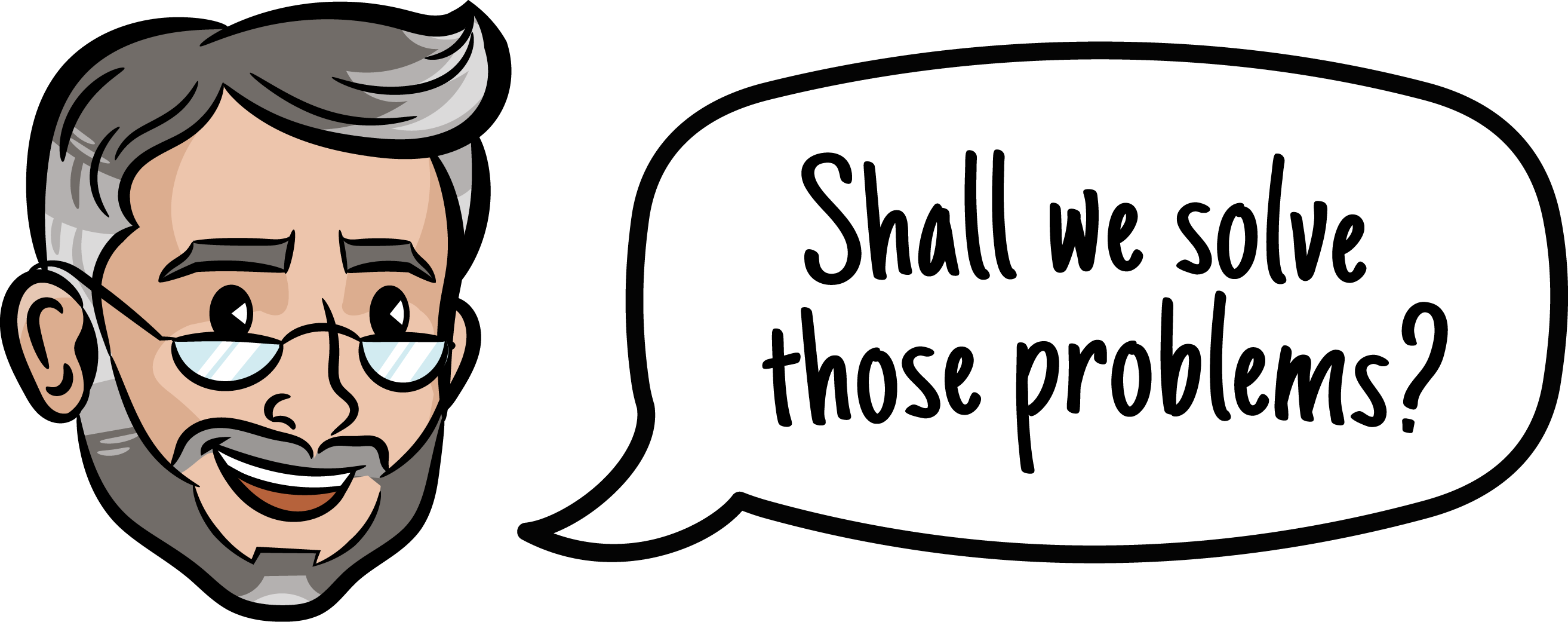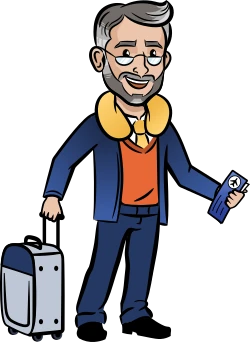

Neil Bainton has had an amazing technology career, bringing Mailchimp to market as COO when it grew from a website agency to the world’s dominant email marketing platform, among many other highlights.
He was kind enough to share some stories and advice for others on their go-to-market journey and what he looks for in an entrepreneur that is destined for success.
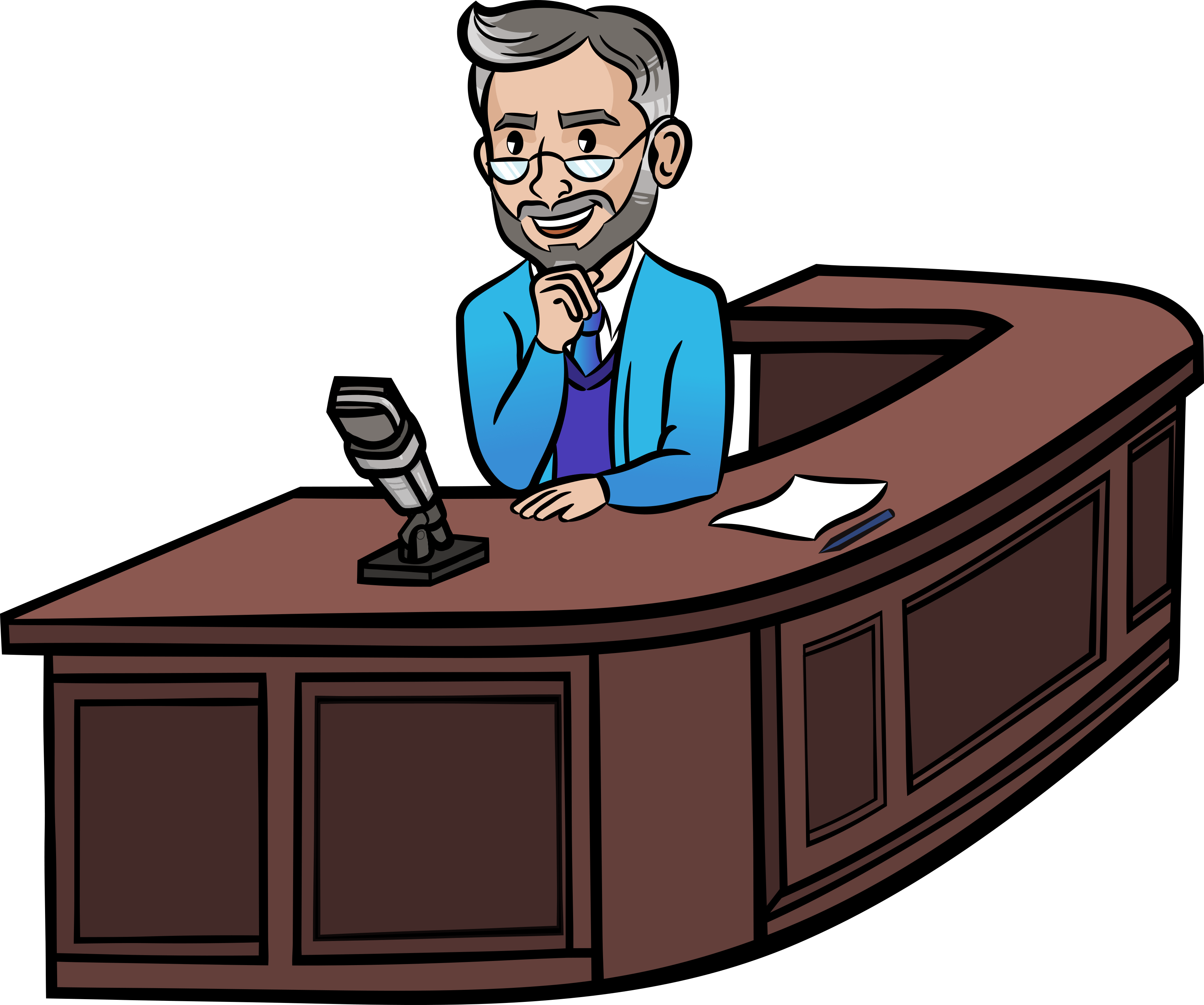
Table of Contents
Early Days in Russia & Travel-Based Companies
Mailchimp Enters the Picture
Thoughts on Venture Capital & Raising Money
Iconic Branding
Building & Maintaining Culture
Startup Direction & Trajectory
Listen to Neil’s Podcast Interview
Neil, you’ve had an incredibly successful career with some very out-of-the-box experiences from living in Russia while building a travel company to taking Mailchimp from a website-building agency/consultancy to the dominant brand globally in email marketing as Co-Creator and COO.
Even more remarkable about the Mailchimp story, you managed to grow huge without taking venture capital and actually turned down a $1B offer to sell to SalesForce. While still privately held, the company finally sold to Intuit (makers of QuickBooks) for $13B last year.
The Mailchimp culture during that time was perhaps just as unique as the incredible growth story.
As a “retiree,” you’ve been extremely generous with your time advising startups that you feel have the right personality profile among the founding group, and have recently been open to conversations with companies you’re not already helping.
That said, we’re excited to hear your thoughts on how to ‘go-to-market’ the right way, what myths about raising capital need to be dispelled, what characteristics you think matter in founders, and other wisdom gleaned from an extremely successful technology career.
That said, let’s get to the good stuff:
Early Days in Russia & Travel-Based Companies
Q: To kick us off, we’d love to hear what you were up to in your early career. What were you doing and how did that influence what you would do later?
A: I guess I took the road less traveled. Not so much because I was trying to be an outlier as much as I really didn’t have a clear idea what I was going to do. I ended up majoring in Russian during my undergraduate years and went on to a graduate program in Russian Language and Literature. To cover my tuition at graduate school, I ran an academic exchange program in the Soviet Union.
We were one of two organizations in the US sending students to study for the summer, semester or a full year in Moscow. Running this organization was my first taste of entrepreneurial life. It was chaotic with limited direction, but I thrived in this situation and really put this organization on the map.
At this time there were really only two things one could do with a Russian education. Teach or work for the CIA. Neither really appealed to me. Then, along came Gorbachev with glasnost and perestroika and I decided to switch direction and get an MBA. Using my experience running the exchange program I was somehow able to convince Wharton that I was a good candidate. I also joined the Lauder Institute at Penn which was a program designed to train Americans in international business. My Russian experience helped here, too.
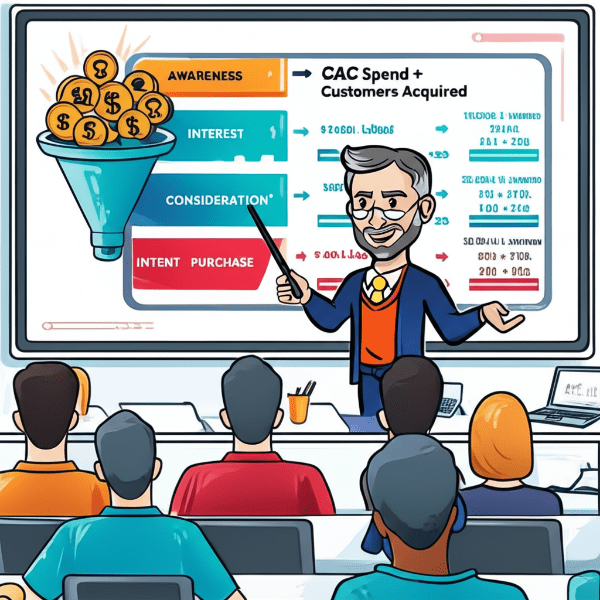
My wife and I lived in Moscow for almost ten years. It was a tumultuous and exciting time. As one of the few business-educated Russian-speaking Americans, we got to do all sorts of things that wouldn’t have been possible to do in the US such as appearing on national television. I like to say that Russia at this time was like one massive startup economy. Lots of chaos and ambiguity and tons of opportunity.
We re-entered the US in July ‘99. For me, after 10 years in Russia, it was a bit like falling from Mars. The good news is that we arrived during the first internet bubble of 1999. I’d always been interested in tech and the internet and was successful getting a job at SFNB, an internet-only bank based in Atlanta. I quickly moved on from there to MP3Radio.com, a joint venture between mp3.com and Cox Interactive Media, and then on to Worldspan, one of the technology platforms powering online travel and airline bookings. I jumped from there to a startup where we used airfare data to expose big changes in marketing pricing to help consumers make informed choices.
Finally, I went from there to Mailchimp. At the time Mailchimp was three guys in a room.
Q: There’s a lot of press (somewhat related to the student debt situation in the US) about how many undergraduate programs don’t really get a person ready for the work world. Any recommendations for someone who is either still in college or at an early job on what types of skills they should be attempting to develop?
A: This is an awesome question and something that I have discussed with my son. I do think that the opportunity cost of four years at school is high. Depending upon your orientation, you might find something like the German trade school education more helpful. In Germany if you chose the trade school path, they have an extensive system in place to train the skills you need in your craft and also get you integrated in the trade through internships.

Professor’s Note:
For USA-based readers, a government-approved Apprenticeship program that unites an Employer, Sponsor, and Related Technical Instruction providers is a similar model designed to allow students to work in a trade while completing their degree program.
Personally, I’d recommend 4 years for liberal arts education. Majoring in things like business, IMHO, is boring. It’s inevitable that one’s career is going to change a great deal so having the ability to think and learn are more important than knowledge one may get during those 4 years. I do realize that this advice is a bit contrarian these days and that lots of students are focusing on professional majors that will yield good-paying jobs straight out of college.
Q: What were your thoughts when you decided that moving to Russia made sense? What were you doing there?
A: Russia seemed like an amazing opportunity. Having studied the language and culture and having the opportunity to live and work there seemed like a dream come true. The reality was slightly different, but not in the ways that one might imagine. In the early days, the biggest challenge was just to get little things done. At that time the city/country was short on modern infrastructure. Just reaching someone by phone could be a challenge and in particular if they were located outside of Moscow. Transportation was still pretty much as it was post-WWII with the easiest way to get around generally being by train. There were flights, too, but not as often and not that reliable.
As things evolved, the infrastructure improved but the ambiguity did not. There were pretty constant, high-level changes that made planning for the future challenging. The largest program was privatization. The plan was to redistribute state assets into the hands of individuals – thinking this would set free entrepreneurial drive.
In fact, it unleashed organized crime and heralded the creation of the first oligarchs. The select few used their money, connections, and wit to amass large amounts of holdings in former state enterprises. This was particularly evident in the case of raw materials since this equated directly with income.
When we first moved to Moscow, we were by far the “wealthiest” people around. We had a Toyota Camry and could drive from our Western-renovated apartment on the western edge of Moscow across town in 20-30 minutes. There was literally no traffic. With privatization, wealth rapidly accrued in the hands of a few, and they displayed and protected their wealth. It appeared that all of the registered cars in Russia were in Moscow making auto travel within the city ever more challenging. Where possible, we moved around by metro.
While there were definitely highs and lows living in Russia, it was an amazing experience until 1998 when the government defaulted on its debt. This was because the price of oil had dropped below sustainable levels for Russian production. The default ushered in a period of less affluence and more brutal business forces.
At this point, I began looking for a way to get back to the US. The good news for Russia was that the downturn was not too long and shortly after we left, Putin came to power. While we view Putin as a monster today, at the beginning of his reign, he was actually a reformer and did improve the living standards for many average Russians. Somehow power always corrupts and absolute power corrupts absolutely…
Q: You built a travel technology company. How did you decide that it needed to exist? What did it provide?
A: Unexpectedly, I got involved in the travel business when I joined Worldspan. The backstory is that Worldspan and the other GDS’s like Sabre and Amadeus were created by the airlines to support electronic booking of tickets. This system predated the evolution of the internet and these companies would provide terminals to the travel agents for researching and booking. I came to Worldspan as the internet was rapidly changing the way that consumers booked airline tickets. As the smallest and weakest player in the space, Worldspan sought to grow market share by opening up its system to online sites like Expedia.

Professor’s Note:
GDS = Global Distribution System
A term used in the travel industry.
During my tenure there, Worldspan grew its online customers to the point where it was processing over 85% of online bookings with the only exception being Travelocity, which was owned by Sabre.
Due to previous government intervention, the GDS’s were a legal oligopoly and used their price control power to charge ever-increasing fees to the airlines. Needless to say, the airlines hated that the organizations they had given birth to were now gouging them. This led to the effort by airlines to create direct-connects thereby bypassing the GDS’s. Today the GDS’s still exist but at much smaller levels. And the online travel agents have had a very challenging time. Airline consolidation, improved technology, and resolve have changed the landscape completely and now airlines are firmly in control of their inventory and distribution.
I left Worldspan to create a company called FareCompare. At FareCompare, we had unique technology for processing airfare updates faster than anyone in the industry. This meant that we could inform the public of major fare changes and in particular, to alert them to good fares just coming on the market. At the time we launched this product the airline industry, pricing was still very opaque to consumers and there was considerable buyer anxiety about getting the best price. We helped to answer the question of whether or not you were paying a fair price.
This too has all changed with airline consolidation. With the exception of a few highly competitive markets, now pricing is driven by the dominant players in any market and generally, there are fewer options. So there are fewer options to shop and fewer dramatic pricing shifts to track, making the FareCompare offering obsolete.
Mailchimp Enters the Picture
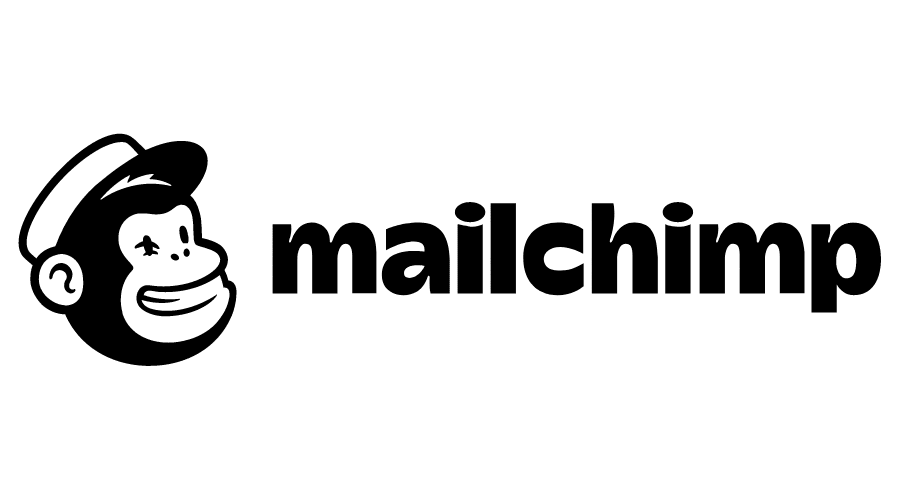
Q: When you first became acquainted with Mailchimp, it was tiny ($200k in annual revenue). How did the relationship start?
A: I had worked with Ben and Mark (the two original founders of Mailchimp) back at MP3Radio and had stayed in touch since then. I met with Ben pretty regularly to discuss the business and was one of their first customers at Worldspan.
At the time I joined Mailchimp it was three guys in one room plus me. The business was already growing, but with additional effort we were able to accelerate the curve considerably. We hired a few more people in pretty short order and moved to a larger space at Means St.
Q: What did Mailchimp do prior to you joining? What was the business model?
A: Before Mailchimp was viable, the guys, Mark and Ben, provided digital agency services to several local companies in Atlanta. This provided some predictability in revenue as Mailchimp first started out.
In late 2006, Ben felt it was time to pull the plug on the agency business and move 100% to Mailchimp. At that time Mailchimp was generating enough cash to cover their salaries at a base level. The one big challenge to the business model was that they were charging per individual send, that is you’d buy credits like you would buy stamps and then use them up as you sent out email. While the costs of the individual sends was nice, the revenue model was very uneven and ultimately meant they were leaving money on the table.
One of the very first things I did when coming on board was to introduce monthly subscription pricing. This pretty much immediately increased over all revenue and made cash flow very predictable. As it turned out, while we were very lean in those days, we never had to count pennies. We always had enough to do the things we wanted to do with the exception of expensive marketing campaigns.
Q: You had some blue-chip names on your resume already (Dupont, PepsiCo) and your own startups… what did you see in Mailchimp that inspired you to throw your weight behind it?
A: I’ve always been a fan of email and even though it was already older technology at the time I started, I believed in its power for good and in facilitating communication and education. I’m also not naive and realize that the system was also used by some to send out shlocky/spammy offers. But as we developed the product and our anti-spam systems, we got better at managing the flow of emails out of our platform.
While I had done stints at large well-known companies, I realized that my sweet spot was smaller, creative companies where I could personally have far greater impact. While large corporations can be a great place to learn, they tend to be risk-averse and bureaucratic.
Q: A number of thought leaders believe a company needs to be reenvisioned quite a few times as its headcount grows. One commonly quoted maxim is every time a company triples in size, all processes need to be reevaluated. Whether you agree with that model or not, can you describe the phases that Mailchimp went through on the journey from $200k ARR to $250M ARR?
A: It definitely did change as the business grew. When there were just four of us, I literally would take the trash out myself. In many ways, this is the greatest part of the journey. You really feel the road.
And at this time, it was 90% of me doing and 10% of me delegating to others. For me, there was really just one big transition that took place about 3-4 years in. It became clear that the organization needed higher level direction and management rather than hands on doing.
Here my role pretty much flipped to 90% delegating and 10% doing. Also, at this point, we introduced regular meetings, not too many, but enough to ensure the leadership team was on board with where we were going and to share our successes. I also started Friday coffee hours as a forum to talk with anyone in the company about what we were doing and what was planned for the future.
Perhaps the last phase, but it was very close to the proceeding one, was when I morphed into being almost exclusively a coach for the senior team. I had built up enough trust that they felt comfortable coming to me with their problems both at work and sometimes at home. I’d listen and try to work a plan on how they could better manage the situation. At least a few of the top team really valued these conversations.

Thoughts on Venture Capital & Raising Money
Q: Many founders (especially of technology companies) believe getting backed by venture capitalists is a way to accelerate passing through those stages. Agree or disagree and why?
A: Money can always help accelerate. I’ve since had the chance to look at lots of companies that have taken in money and how it’s affected them. For me, the key is to have the product offering all worked out as well as fully understanding your target market. If you take money too early there’s a real risk you’ll waste it on the wrong things and then it will be gone.

Professor’s Note:
Venture capital (VC) is a form of investment for early-stage, innovative businesses with strong growth potential.
That said, a big influx of money is almost always a bad thing unless you have one of the rare situations where the management team is highly disciplined and knows what they want to do. From my experience, I’ve seen the internal wish list explode when money shows up.
Where I would recommend using money is on scaling and marketing. Once you’ve got things figured out, use external money to accelerate the rate you can onboard customers and advertising to expand awareness.
FWIW, I’m not a fan of Google or Facebook ads for building a business. There are a few exceptions, but they are generally too expensive to scale.
Q: Did Mailchimp attempt to raise venture capital or other outside investment? How did that go?
A: We did try when I first got there. We were given the cold shoulder because we were too small, and we were a spam platform. I compare us to Waste Management. No one wanted to touch our business. So we said, f$%k them, we’ll do it on our own. Which we did. And then, once it was clear we were growing like mad, all of the money guys lined up to plead to give us money. Thankfully, we said no.
Q: What would you say were the primary drivers of growth?
A: Luck. A small team with the right skill set and trust. A desire to prove to the world in our respective areas of expertise. A culture supporting rapid iteration and willingness to fail. A voice that connects with customers and builds a genuine audience.
Q: There has been some consolidation of thought leadership around freemium approaches and the term “product-led growth” has picked up usage over the last couple of years. Tell us a little bit about how those strategies helped with Mailchimp’s growth? What were some “growth hacks” Mailchimp deployed?
A: The notion of product-led growth is new to me, but as others have pointed out, that’s what we did. We realized that our largest competitor, Constant Contact, was at least 50 times our size in 2007. And they had just had an IPO and were advertising on TV. Seemed like game over.
But I realized that since they were publicly held, they were very sensitive to revenue hits. This opened the window for “Forever Free.” We said, hell, rather than spending money on marketing that we don’t even have, how about if we just give the product away as our form of marketing?
Surprisingly, none of our competitors followed us in this direction and “Forever Free” became the biggest growth driver ever for Mailchimp. We did have to do a fair amount of work before launching free to try to reduce the use of our platform to send spam. This effort grew considerably over time and we got better and better at identifying non-permission emails.
The notion of giving things away lasted for many years. Each time we created a new feature, the starting point was always let’s give it away. This really, really helped with adoption. Whenever you put a paywall on a feature, it’s really hard to get uptake. And while our monthly price point was the same as competitors, we objectively were a much better deal since we offered so many additional features for free.
One of these was the API. From the beginning, we were an API-led company. This really appealed to the techie world. Can’t say how many developers have mentioned to me that the first project they ever did was wiring up a subscription form through Mailchimp. But we took it much further than just subscriptions and let folks do almost everything they could in the app via the API.
In fact, there were a few things that you could only do through the API. Our competitors initially didn’t have APIs and when they did, they’d charge extra to access them.
While we definitely had some mishaps with the API and stupid mistakes by our users that affected the whole system, this strategy proved very successful. And in part, it helped us to identify our value proposition.
Basically, through the API we came to understand that the one thing we did that really added value for our customers was sending and tracking their email. It’s sort of ironic because the underlying SMTP technology is free and ubiquitous. But what you learn quickly is that with all the anti-spam protections put in place by the ISP’S’s, having a good sending reputation and constantly monitoring your sending and reputation are critical.
Iconic Branding
Q: A lot of our work at SFP involves helping clients develop a memorable, iconic brand as part of a broader body of work to get their companies connecting with clients faster and more frequently. When SFP came out of the ground in fall of 2022, Mailchimp was a reference point as we worked on the illustrations of “The Professor.” What can you tell us about how you landed on the name “Mailchimp?”
A: That was all Ben. He would say: “It’s so simple a chimp could do it.” He was also influenced by Pets.com and other internet marketing phenomena from 1999-2000. While we embraced the name, there was some confusion with our brothers in a parallel universe at SurveyMonkey.

Q: What about the iconic monkey-in-a-hat logo (Freddie)? How did you land on that image and style?
A: That was all Ben. He had a relative who made all of the prototypes. Kudos to both Ben and Aaron for coming up with such innovative ways to connect with our audience. As the old guy in the room, my head just didn’t go there. But I learned quickly to accept their ideas.
Q: For our more finance-oriented readers, how would you quantify the financial impact of the way you branded the company? Would you care to posit a growth trajectory over the same time period had you used branding more like Constant Contact (the incumbent in the email marketing space at the time)?
A: So I sort of talked about this a bit above. Constant Contact definitely was doing the traditional marketing thing. Perhaps if Mailchimp hadn’t come along they would have been fine. We basically took the only path open to us which was to be young, scrappy, and fun. The customer engagement and loyalty was amazing. Again, hats off to Ben and Aaron since they created the voice and tone for the app and communications.
Building & Maintaining Culture
Q: What about Mailchimp’s culture? Without outside investment and venture capitalists on a 5-year fund timeline, you certainly had less pressure to work in a certain way. What type of culture was senior leadership trying to inspire?
A: We just wanted to kick ass. And in my case, grow market share and pass Constant Contact. We rarely talked internally about financial metrics. While we were making lots of money, we would talk instead about growth KPIs like new sign-ups, first-time sends, and total email sent. We found that making things too mercantile tended to temper the enthusiasm of our team and definitely our customers.
Q: How and to what extent were you able to maintain the culture you wanted when growth and headcount started to grow precipitously?
A: While in one life it’s hard to make absolute statements about growth and culture, I can say that Mailchimp experienced the same thing many others face.
Personally, I really wanted to keep the size of the company at 150 or less. The theory being that then you actually know everyone by face and name. And the hope was through automation and outsourcing we could still grow, but not lose control over the culture.
Unfortunately, egos kicked in and growth in the team became important. It may also be a function of the pent-up demand that came from us always being starved for resources. Once we had money, the temptation was to grow. I left Mailchimp in great part because it was becoming a traditional corporation with the various internal departments fighting with each other and also because legal began to make it impossible to move quickly.
Startup Direction & Trajectory
Q: Being an Atlanta-based company, you were in close proximity to other companies that integrated with and then eventually sold to SalesForce… what were your thoughts when the offer came in? Why did you all decide not to take the deal?
A: That was all Ben. He wasn’t excited about working at SaleForce, and he personally turned down the offer without discussing it with us. As history has shown, he made the right decision for him and Dan since they did much better with the Intuit purchase.
Q: Any other advice or tips you’d like to share from your time hockey-sticking Mailchimp?
Also, try to tune out all the noise. There’s a temptation to compare yourself to others. We did this initially with Silicon Valley. Then we went out there to visit and saw how miserable they were because they couldn’t hold on to their talent.
Once we found someone in Atlanta, they were ours. Lastly, humility and genuine connection with your customers. Ego, unfortunately, almost always leads to trouble.

Professor’s Note:
Hockey Stick Growth is a term that is often used to describe what happens when a startup finds its market niche and market conditions are positive.
Q: Since Mailchimp, you’ve helped a number of start-ups (including our non-crypto NFT project) and after mastering your “second career” as a professional photographer, you’ve become more active as a mentor again. I asked you what types of companies you were open to working with expecting some comments about target industries or business models, but your answer was 100% about founder personality qualities. What types of founders are you looking to work with and how should they contact you?
A: Humble. Willingness to listen and learn. Driven to prove themselves.
Q: How do those qualities translate into success?
A: To me that’s self-explanatory.

Q: You’ve also been exposed to plenty of Nepo-Babies and other entitled founders… what ends up happening to companies with those types of leaders?
A: That’s one of my big pet peeves. So much money flowing into companies that have no chance of success and have leaders with the wrong attitude. Entitlement is the death of any organization. Leaders need to have enough pride in themselves as well as enough humility to recognize that they need to actually demonstrate real value to customers rather than just talking about it or dropping tons of money on stupid ads.
These “hot house” companies as I call them die during the economic downcycle. At least then they can all blame it on the economy, but unfortunately, then they don’t learn much from the experience.
Q: The current high-and-climbing interest rate climate has punished public company valuations significantly and caused liquidity for startups to be much scarcer. Is this terrible, great, somewhere in the middle?
A: I think it’s a much-needed cleansing. I also think it’s unlikely we’ll see free money anytime soon again. Which means that entrepreneurs, rather than starting their own company to address a market, may need to seek out partnerships or licensing agreements to get market growth since they won’t have all the funds on their own.
Q: What’s different about starting a company now from say 5 years ago?
A: Really no idea personally since I’ve been a bit of a Rumpelstiltskin. I guess the big changes I have observed is that there is SO much infrastructure available to support startup companies. While this is good and helpful, it may create extra noise since the barriers to entry are low.
Also, there’s so much crap advice out there. I think it’s hard for founders to stay on their own path. This is particularly true if they take in money.
Q: When does it make sense to take outside capital? What type of relationship with an investor is ideal for a core team working on a great business?
A: Only once you have 90% of it figured out. Until then use friends and family and ramen noodles. When you do take in money, if you’ve figured it all out, you should be able to keep as much equity as possible and dictate terms to the investor. I know that sounds sort of unrealistic to folks seeking to raise money now. But the whole metric of how much you’ve raised is total bullshit.
For me, it’s how fast are you growing and what’s your cost of acquisition?
If you get these right, the world is your oyster.
Q: At SFP, we enjoy documenting all the crazy lingo that appears in sales and marketing discussions. Any terms you’d like to add to our marketing jargon encyclopedia?
A: Hot house company: a company that couldn’t exist without outside funding. When the economy turns, these companies literally wilt and disintegrate.

